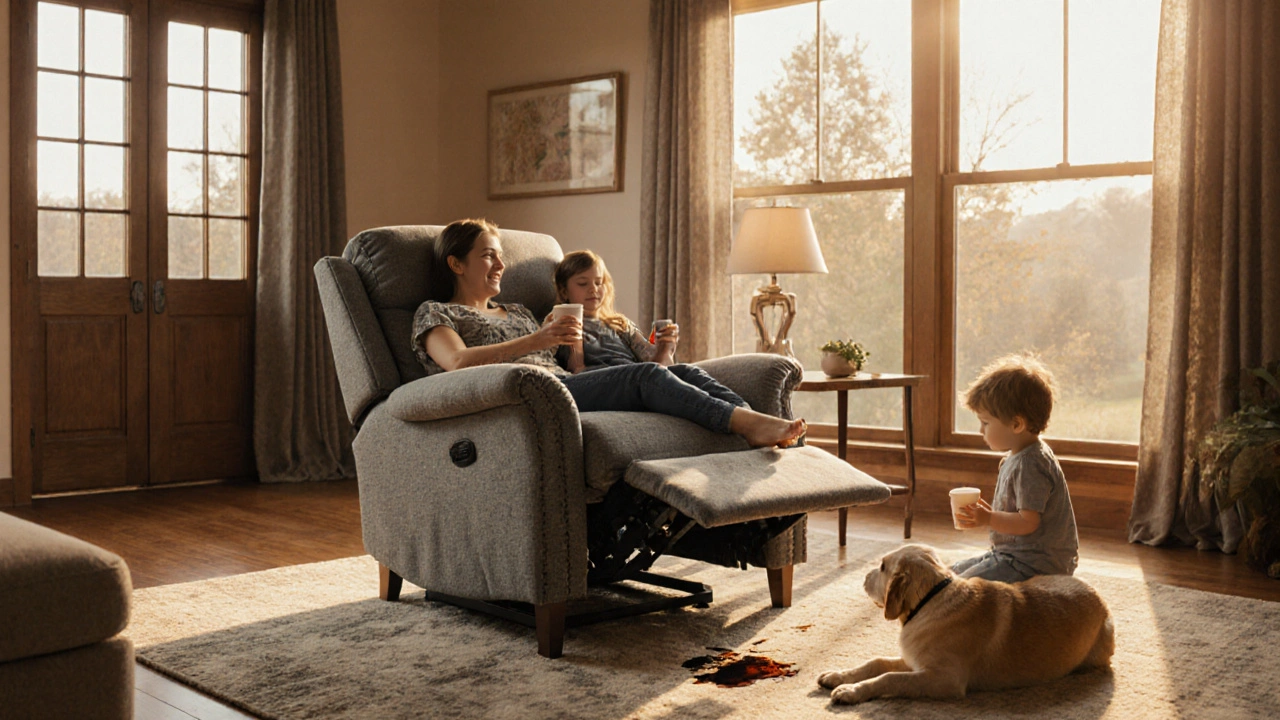When you buy a durable recliner, a sturdy, well-made chair designed to provide long-term comfort and support. Also known as heavy-duty reclining chair, it’s not just about pushing a button and leaning back—it’s about the frame, the fabric, and the craftsmanship that keeps it going for years, not months. Most cheap recliners break down fast: the mechanism squeaks, the foam flattens, the fabric pills. But a truly durable recliner? It’s built like a piece of furniture meant to be passed down.
What makes one durable? It starts with the frame. Look for kiln-dried hardwood like oak or ash—not particleboard or plywood glued together. These woods don’t warp in humidity, and they hold screws tight for decades. Then there’s the mechanism. High-quality recliners use steel or reinforced polymer gears, not flimsy plastic parts that snap after a few hundred uses. And the upholstery? Top-grain leather or tightly woven, stain-resistant fabrics that won’t fade under sunlight or tear from daily use. These aren’t just features—they’re guarantees.
And it’s not just about strength. A durable recliner also means comfort that lasts. Memory foam that doesn’t turn to mush, lumbar support that stays where it should, and a recline angle that actually helps your back—not just pretends to. This matters if you’re using it daily for reading, watching TV, or even napping. You’re not buying a chair; you’re investing in your posture, your rest, and your peace of mind.
What’s interesting is how many people overlook sustainability when choosing recliners. But here’s the truth: a chair that lasts 15 years is far more eco-friendly than three that last five each. That’s why many of the best durable recliners come from makers who source wood responsibly, use non-toxic finishes, and build for repair—not replacement. You’re not just getting a chair—you’re supporting a smarter way to furnish your home.
You’ll find posts here that dig into what makes recliners work for seniors, how to spot real quality vs. marketing hype, and even where the best ones are made. Some talk about Lazyboy’s origins, others about the real cost of cheap furniture over time. There’s advice on sleeping positions, how to check the frame before you buy, and why a good recliner can actually help with back pain and breathing. No fluff. Just real talk from people who’ve sat in too many bad chairs and learned the hard way.
So if you’re tired of replacing recliners every few years, or if you want one that actually supports your body without breaking the bank in the long run—what follows is your guide. These aren’t just product reviews. They’re lessons from real users, makers, and experts who know what holds up—and what doesn’t.

Discover the best recliner chair brands in 2025 for comfort, durability, and value. Compare La-Z-Boy, Flexsteel, Thomasville, Hooker Furniture, and Homelegance to find the right one for your home.
More